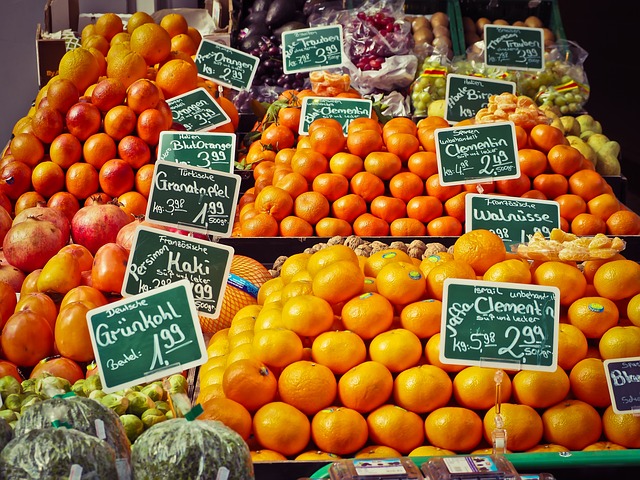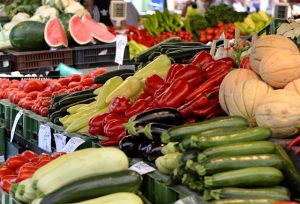Eco-Friendly Composting: A Guide for Gardeners with Yard Waste Recycling Tips
Yard waste removal and recycling through composting is a sustainable practice that transforms organic matter like leaves, grass clippings, and kitchen scraps into nutrient-rich soil amendments. This process not only enriches gardens but also sig…….

Yard waste removal and recycling through composting is a sustainable practice that transforms organic matter like leaves, grass clippings, and kitchen scraps into nutrient-rich soil amendments. This process not only enriches gardens but also significantly reduces methane emissions from landfills by diverting organic waste. Homeowners can engage in this eco-friendly method on-site or utilize community yard waste recycling programs to compost effectively, thus supporting plant growth and biodiversity while managing their carbon footprint. Selecting an appropriate compost bin or pile is key, as it should be discreet yet functional, facilitating the optimal decomposition of materials by maintaining a balanced carbon-to-nitrogen ratio and ensuring aeration for microbial activity. For those with space constraints, tumbler bins are a convenient option, while larger yards may benefit from stationary containers designed to blend with garden aesthetics. By adopting this approach to yard waste management, garden enthusiasts contribute to environmental sustainability and the health of their gardens.
Embark on a greener path with compost creation, an enriching practice for garden enthusiasts eager to sustainably nourish their plots. This article delves into the transformative process of composting, offering a comprehensive guide that spans from understanding the science behind yard waste removal as a cornerstone of organic recycling to mastering the art of maintaining a balanced compost pile. Explore the essentials for selecting a compost bin or pile suited to your space, learn which types of yard waste are ideal for composting, and follow a step-by-step process to initiate your own compost pile from the ground up. Gain insights into accelerating decomposition with aeration techniques, troubleshoot common challenges, and understand the myriad benefits compost provides to garden soil fertility. Additionally, discover how to integrate compost into your gardening routine, and explore local resources for assistance. From legal yard waste removal services for larger projects to innovative DIY compost bins, this article is a treasure trove for those looking to contribute to the health of their gardens and the environment.
- Understanding Compost: A Sustainable Solution for Gardeners
- Yard Waste Removal and Its Role in Organic Recycling
- Essential Components of a Balanced Compost Pile
- Selecting the Right Compost Bin or Pile for Your Space
Understanding Compost: A Sustainable Solution for Gardeners

Gardening enthusiasts can significantly contribute to sustainability by harnessing yard waste for compost creation. Compost, a nutrient-rich soil amendment, is an invaluable resource for gardeners as it enhances soil fertility and structure, leading to healthier plant growth. The process of creating compost is a simple yet effective form of yard waste removal and recycling. It transforms organic materials such as leaves, grass clippings, fruit and vegetable scraps, and even coffee grounds into a beneficial product without the need for synthetic fertilizers or chemicals. This not only reduces the amount of organic matter sent to landfills but also minimizes greenhouse gas emissions that would otherwise be released during decomposition in anaerobic conditions. By understanding the composting process and incorporating it into their gardening practices, enthusiasts can turn what was once considered waste into a valuable tool for maintaining and improving soil health, thereby promoting a more sustainable garden ecosystem.
To initiate composting, gardeners should start by selecting a suitable site that is conveniently accessible yet out of the way. The compost pile or bin should be placed on a level surface with good drainage to avoid waterlogging. The next step involves gathering appropriate materials. A balanced mix of ‘greens’ (nitrogen-rich materials like kitchen scraps and green plant clippings) and ‘browns’ (carbon-rich materials such as dried leaves, straw, and wood chips) is essential for optimal decomposition. These materials should be layered, alternating greens and browns to maintain an optimal carbon to nitrogen ratio, typically about 30:1. Regularly turning the compost pile or adding new materials can accelerate the decomposition process, leading to rich, humus-like compost that can be used throughout the garden. Yard waste removal and recycling through composting not only enriches the soil but also serves as a testament to the gardener’s commitment to sustainable practices.
Yard Waste Removal and Its Role in Organic Recycling

Yard waste removal plays a pivotal role in the sustainable management of organic materials. As gardens and landscapes undergo seasonal changes, the resulting debris such as fallen leaves, grass clippings, and garden prunings can accumulate rapidly. Traditional disposal methods often involve transporting these organics to landfills, where they contribute to methane emissions, a potent greenhouse gas. However, by opting for yard waste recycling programs, communities can transform this organic waste into valuable compost, thereby closing the loop on nutrient cycles and enriching garden soils. These programs not only divert organic matter from landfills but also return essential nutrients to the earth, promoting healthy plant growth and supporting biodiversity. Compost created through the recycling of yard waste serves as a natural alternative to synthetic fertilizers, reducing the environmental impact of gardening practices and fostering sustainable landscapes.
Composting is not only a cost-effective solution for disposing of yard waste but also an environmentally sound practice that contributes to organic recycling. Homeowners with accessible green spaces can significantly reduce their carbon footprint by composting their own yard waste on-site. This DIY approach empowers garden enthusiasts to take control of their waste streams and contribute positively to local ecosystems. By understanding the best practices for composting, including the right balance of materials and adequate moisture levels, gardeners can create a nutrient-rich medium that benefits both their gardens and the environment. Engaging in yard waste recycling through composting not only enriches soil health but also aligns with broader sustainability goals, making it an essential practice for those who prioritize eco-friendly gardening.
Essential Components of a Balanced Compost Pile

Garden enthusiasts looking to enrich their soil and promote sustainable practices can harness the power of composting, which recycles yard waste into a valuable resource. A balanced compost pile is essential for effective decomposition and should ideally contain a mix of nitrogen-rich ‘green’ materials, such as kitchen scraps, grass clippings, and manure, with carbon-dense ‘brown’ materials like dried leaves, straw, or shredded paper. The balance between these components is crucial; greens provide the necessary nitrogen to stimulate microbial activity, while browns contribute the required carbon that supports the structure of the compost. Yard waste removal and recycling through composting not only reduces landfill use but also returns nutrients to the soil, fostering healthy plant growth. To maintain an optimal compost pile, ensure that you alternate layers of greens and browns and keep the pile moist but not saturated. Regular turning of the compost helps aerate it, which is necessary for oxygen to reach the decomposing materials and aids in the decomposition process. By understanding and implementing these key components, gardeners can effectively manage their yard waste and create a nutrient-rich compost that benefits both their garden and the environment.
Selecting the Right Compost Bin or Pile for Your Space

When initiating a composting project, selecting an appropriate bin or pile design for your yard waste removal and recycling efforts is crucial. A compost bin or pile not only streamlines the decomposition process but also enhances the aesthetics of your garden space. Depending on the available space in your yard and the volume of organic waste you intend to compost, you can choose from a variety of compost bins that range from compact tumblers to spacious stationary containers. Tumblers, for instance, are ideal for those with limited space or who prefer an easy-to-manage composting system. They allow for regular mixing and aeration, which are key factors in accelerating the breakdown of yard waste into rich, humus-like compost.
For larger operations, stationary bins provide ample space for substantial yard waste removal and recycling needs. These can be integrated into garden corners, offering both functionality and an opportunity to blend the compost system with your garden’s design. When selecting a bin or pile site, consider factors such as proximity to your main gardening area, ease of access for adding materials and harvesting compost, and a source of moisture if not using a self-watering system. Additionally, ensure that the chosen location receives adequate sunlight for effective decomposition, while also being accessible for maintenance tasks. By thoughtfully selecting a compost bin or pile that aligns with your garden’s needs and your lifestyle, you can efficiently recycle yard waste and contribute to sustainable gardening practices.
Compost creation is a rewarding pursuit for garden enthusiasts, offering a sustainable approach to waste management and soil enrichment. By understanding the fundamentals of compost and embracing yard waste removal as an integral part of organic recycling, gardeners can significantly contribute to environmental health. A balanced compost pile, crafted from select essential components, serves as a fertile foundation for thriving plant life. Choosing the right compost bin or pile design that suits your available space further streamlines the process. Embrace this green practice, and transform your yard waste into a valuable resource, enriching both your garden and the planet.







